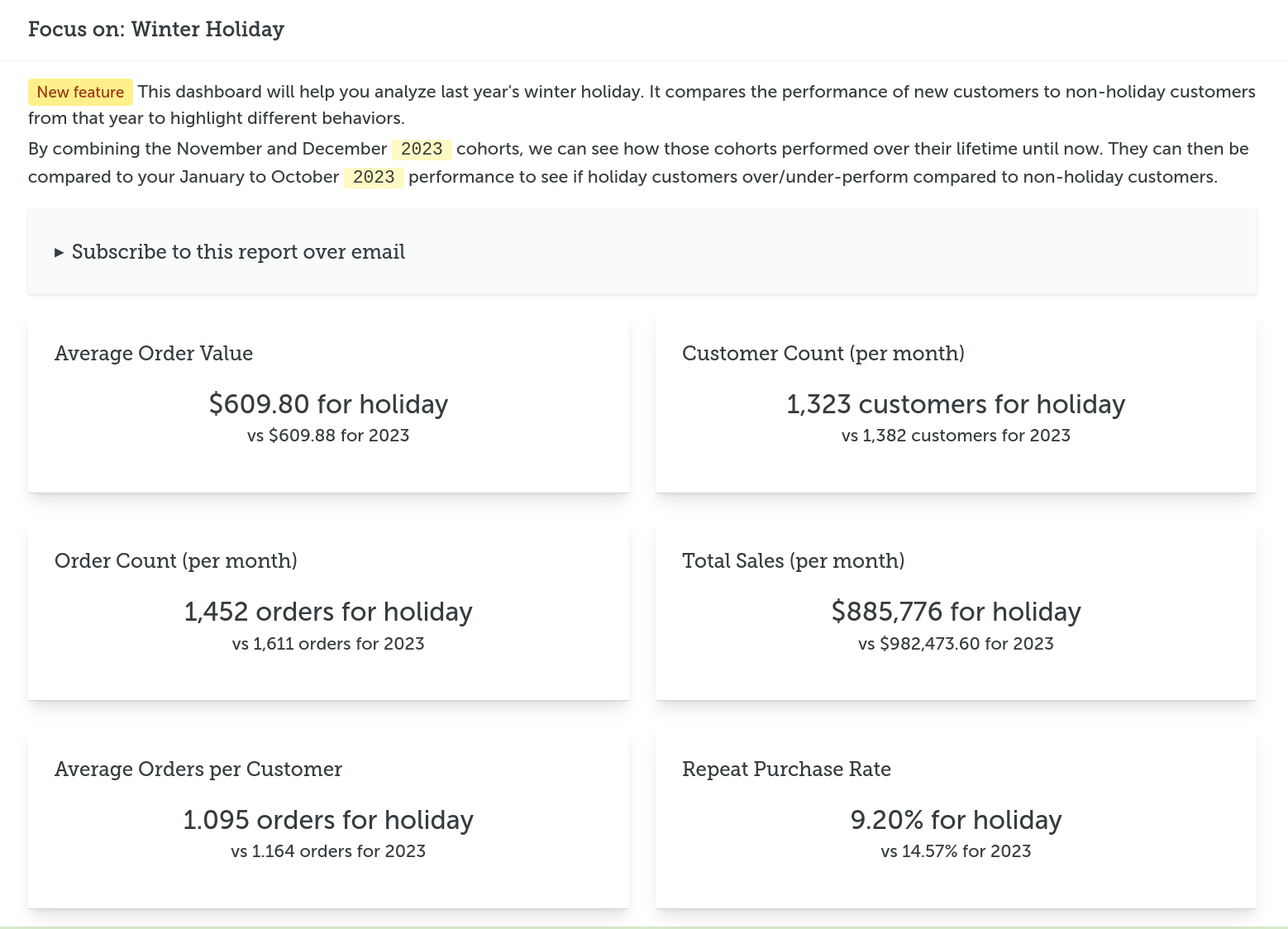The Winter Holiday focus page will help you analyze how customers acquired during last November and December performed when compared to the rest of that year.

It use cohorts so only customers acquired during those months are tracked. Customers acquired in November/December are in the holiday bucket, January to October are in the year bucket. Returning customers who purchased in prior years will not be counted as part of this analysis. We're only looking into how new customers behave to better tune customer acquisition.
Each metric is calculated for the holiday and rest of the year buckets. The metrics look at the full lifetime of each customer, not just what they spend in that month. So if you are looking at the report in July, a holiday customer acquired last November would have their orders from November, December, January, February, March, April, May, June, and July analyzed.
This means looking at your holiday performance right after the holidays will show holiday customers as weaker. That's because they only have a limited number of months to reorder. I recommend reviewing holiday performance in summer which gives them six months or so to build another order history.
The holiday and rest of the year buckets are compared in the report to make it easy to see where the holiday group over/under-performs compared to typical customers.
Using this information you can adjust your upcoming holiday customer acquisition campaigns. Perhaps your holiday customers perform better so you can spend more to acquire them profitably. Perhaps they show very weak repeat customer behavior and aren't reordering.
Eric Davis
How do your products determine customer behavior
In Repeat Customer Insights the Customer First Product analysis will measure customer behavior based on the products each customer first ordered.